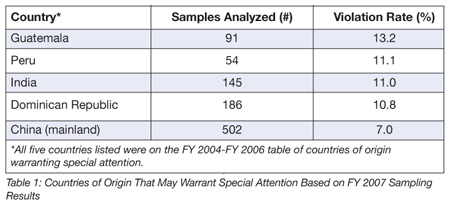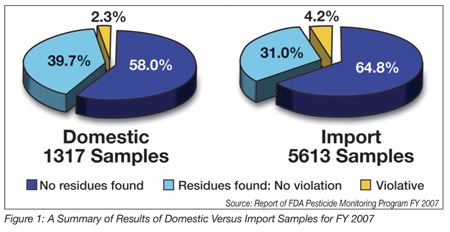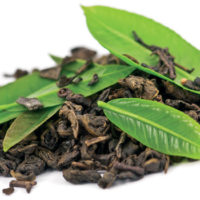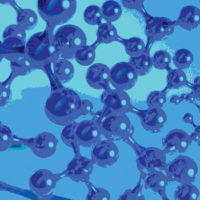The term “pesticide” is rather broad-based, but according to the Environmental Protection Agency (EPA), a pesticide is an agent that is used to control any pest. We usually think of pests as insects or rodents, but pests can also be birds, unwanted plants (weeds), fungi or microorganisms such as bacteria and viruses. Likewise, we usually refer to pesticides to include insecticides or rodenticides, but they can also apply to herbicides, fungicides, microbicides and various other substances used to control pests. Under current United States law, a pesticide is also any substance or mixture of substances intended for use as an insect or plant growth regulator, insect mating disruptor or egg sterilant, defoliant or desiccant.
U.S. Monitoring Programs
Three federal government agencies share responsibility for the regulation of pesticides. The EPA “registers” (approves) the use of pesticides and establishes “tolerances” (allowable limits) for specific food crops. The Food Safety and Inspection Service (FSIS) of the U.S. Department of Agriculture (USDA) is responsible for the monitoring of pesticides in meat, poultry and certain egg products. The U.S. Food and Drug Administration (FDA) is responsible for the enforcement of these “tolerances” for both imported and domestic foods. Pesticides that do not have a tolerance established for a specific commodity are illegal and not allowed.
FDA samples individual lots of domestic and imported foods and analyzes them for pesticide residues to enforce the tolerances established by EPA. Domestic samples are collected as close as possible to the point of production in the distribution system; import samples are collected at points of entry into the U.S. While emphasis is on the raw agricultural product (which is typically analyzed as the unwashed, whole, raw commodity), processed foods are also included.
For imports, shipments with illegal residues are refused entry into U.S. commerce. At the same time, the foreign supplier is placed on “Detention Without Physical Examination,” or DWPE (previously called automatic detention) for future imported lots of the commodity based on the finding of a single violative shipment. DWPE can be applied to products from specific growers, manufacturers or shippers, or to a geographic area or country if the problem has been encountered repeatedly. FDA’s Import Alerts, available at http://alpha.ora.fda.gov/fiars/fiars.html, describe current DWPEs for pesticide residues and other food issues. There are currently four Import Alerts that address food products that are under DWPE for pesticides, and they are the following:
• Import Alert # 99-05 “Detention Without Physical Examination of Raw Agricultural Products for Pesticides”
• Import Alert # 99-08 “Detention Without Physical Examination of Processed Products for Pesticides”
• Import Alert # 99-14 “Countrywide Detention Without Physical Examination of Raw Agricultural Products for Pesticides”
• Import Alert # 99-15 “Countrywide Detention Without Physical Examination of Processed Products for Pesticides”
 Table 1 shows a listing of some current problem areas.
Table 1 shows a listing of some current problem areas.
 FDA analyzed a total of 6,930 samples of domestically produced food and imported food from 98 countries for pesticide residues in FY 2007. The agency’s findings, shown in Figure 1, demonstrate that pesticide residue levels in foods are generally well below EPA tolerances.
FDA analyzed a total of 6,930 samples of domestically produced food and imported food from 98 countries for pesticide residues in FY 2007. The agency’s findings, shown in Figure 1, demonstrate that pesticide residue levels in foods are generally well below EPA tolerances.
Note: Samples from Mexico continue to comprise the greatest portion of FDA’s import pesticide sampling. In FY 2007, 3,091 samples from Mexico were analyzed. The violation rate for Mexican samples was 3.0%, somewhat below the 4.2% average for all import samples. Continued intense scrutiny of Mexican foods is warranted due to the large volume of foods exported from Mexico to the U.S.
Analytical Methods and Pesticide Coverage
To analyze the large numbers of samples whose pesticide treatment is usually unknown, FDA uses analytical methods capable of simultaneously determining a number of pesticide residues. These multi-residue methods (MRMs) can identify about half of the approximately 400 pesticides with EPA tolerances, and many others that have no tolerances. The most commonly used MRMs can also detect many metabolites and degradation products of pesticides.
Single-residue methods (SRMs), or selective MRMs, are used to determine specific pesticide residues in foods. An SRM usually identifies one pesticide; a selective MRM measures a relatively small number of chemically related pesticides. SRMs and selective MRMs are more resource-intensive per residue and therefore employed only if a specific residue is suspected. A suspicion of a violation or a need to acquire residue data in select commodities will usually trigger use of these methods.
The lower limit of residue measurement in FDA’s determination of a specific pesticide is typically well below tolerance (allowable) levels. Tolerance levels generally range from 0.1 to 50 parts per million (ppm). Residues present at levels of 0.01 ppm and above are usually measurable; however, for individual pesticides, this limit may range from 0.005 to 1 ppm. Trace levels of pesticide residues are also reported. The term “trace” is used to indicate residues that are detected but at levels below the residue’s limit of quantitation (LOQ) for the method employed. When a pesticide is not allowed, the results must be below the LOQ.
Sometimes a high degree of instability of active ingredients in pesticides can cause problems during analysis. For instance, there are substances that decay during normal extraction and may form small, not easily detectable molecules. Besides pesticide residues, a food sample extract also contains several thousand different natural components. It does not make sense to clarify the identity of all these substances. Likewise, analytical devices are oriented toward finding only the substances regulated by law. This does, however, mean that previously unknown substances, those that have been banned for a long time, or substances produced illegally could be missed.
FDA Pesticide Coverage
A table of pesticides detectable by methods used in FDA’s FY 2007 regulatory monitoring report is available at www.fda.gov/Food/FoodSafety/FoodContaminantsAdulteration/Pesticides/ResidueMonitoringReports/ucm169577.htm.
International regulations on the maximum residue levels (MRLs) of pesticides in food cover hundreds of individual components in the range of 10 ppb or lower. Currently, more than 300 regulated pesticides can be analyzed by gas chromatography/mass spectrometry (GC/MS), while a large group of highly polar pesticides is covered by liquid chromatography/mass spectrometry (LC/MS) methods.
Techniques of Pesticide Analysis
The first technique to enjoy wide applicability in analyzing pesticides was GC. The development of element-selective detectors (e.g., electron capture, electrolytic conductivity/Hall, flame photometric) allowed fairly sensitive detection of most analytes. These techniques, however, did not provide clear-cut identification. Confirmatory evidence for identification was obtained by analysis on a column of different chemistry, with correspondingly different selectivity. The development and widespread availability of high-quality capillary columns greatly enhanced the reliability of GC work.
A few analyses historically have been performed by high-performance liquid chromatography (HPLC). However, the technique was useful for relatively few pesticides, since the technique has far more limitations than GC.
More recently, highly selective and highly sensitive methods using mass spectrometers have become available. Single-quadrupole detectors allowed a first layer of confidence in identification. Advances in tandem MS detectors have allowed the development of extremely selective and sensitive detection of residues, with high-confidence identification of analytes. Both gas chromatographic and liquid chromatographic separations have been combined with tandem MS detection. While many MS techniques are limited to targeted compounds, time-of-flight (TOF) technology is capable of collecting full-spectrum MS data, albeit with slightly lower sensitivity than other tandem MS techniques.
These techniques allow for multi-residue runs that can number in the hundreds of analytes per run; however, no method or practical combination of methods can certify a food “pesticide free.”
The Challenge to Industry
With the expansion of the global food industry, domestic food manufacturers are looking for new sources for their ingredients around the globe, while at the same time increasing the international scope of their markets. Combined with an increasing demand for “pesticide-free” or “organic” foods, manufacturers are faced with a major challenge.
As a private third-party laboratory, we are frequently asked to test both raw and processed products to assure that they are “pesticide free.” There are more than 1,000 agricultural chemicals and “free” is a non-quantifiable term. This puts the industry and laboratories in an impossible position. Unfortunately, there is no method that can practically assess all matrices for all chemicals at the “zero” level.
In summary, pesticide analysis, in conjunction with regulatory compliance, is not always straightforward. There are hundreds of chemicals in combination with hundreds of food types. While for any given matrix and any given pesticide there is an analytical method, the detection level (as we chase zero) might not be obtainable. When you expand this in an effort to cover all chemicals in all foods, it becomes a real conundrum. With this in mind, stakeholders in this arena should be aware of the issues and be careful about looking for “pesticide free.”
Martin Mitchell is the managing director of Certified Laboratories, Inc. Certified Laboratories was established in 1926 and currently has three divisions in Plainview, NY and Merced and Buena Park, CA. The laboratories are ISO 17025-accredited and are expert in all areas of pesticide analysis.
The Confusing World of Pesticides: A Primer




